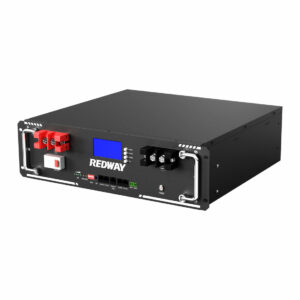Why are rackmount UPS more expensive?
Rackmount UPS systems cost more due to industrial-grade components, scalability features, and specialized designs for high-density power distribution in data centers. They integrate advanced cooling, modular lithium-ion batteries, and redundant inverters to meet 99.999% uptime standards—factors absent in consumer-grade units. Pro Tip: Calculate total cost of ownership (TCO); rackmount UPS often lasts 2–3x longer than tower models in 24/7 operations.
What components drive rackmount UPS costs higher?
Rackmount UPS systems use industrial-grade inverters, modular lithium-ion batteries, and N+1 redundancy circuits to ensure fault tolerance. These components exceed the 80% efficiency of tower UPS, with premium models hitting 97% via double-conversion topology. For example, a 10kVA rackmount UPS may include hot-swappable battery trays, while tower units lack such enterprise features.

Beyond raw hardware, rackmount designs require precise thermal management—think copper busbars instead of aluminum and variable-speed fans. A 3U/5kVA unit might allocate 30% of its cost to cooling alone. Pro Tip: Always verify input voltage range; rackmount UPS often supports 200–480VAC for global compatibility, unlike fixed-voltage tower systems. Transitioning from component-level costs, it’s clear why a 10kVA rackmount UPS costs $5k vs. $2k for a tower model.
How does scalability affect rackmount UPS pricing?
Scalability adds modular power shelves, parallelable units, and software-managed load balancing, increasing complexity. A scalable 20kVA system might allow adding 5kVA modules versus replacing entire tower UPS. This requires sophisticated firmware and current-sharing hardware, adding 15–25% to upfront costs. For example, Eaton’s 9PX rack UPS scales from 6kVA to 20kVA, while non-scalable models plateau.
Practically speaking, scalability future-proofs infrastructure but demands premium components. Parallel configurations need synchronization circuits to prevent phase conflicts—a $200/unit cost adder. Pro Tip: Deploy lithium-ion batteries in scalable UPS; their 3,000+ cycles outlast lead-acid’s 500, reducing long-term expansion costs. Transitioning to operational factors, redundancy also impacts pricing.
| Feature | Rackmount UPS | Tower UPS |
|---|---|---|
| Scalability | Modular (5–200kVA) | Fixed (1–10kVA) |
| Battery Chemistry | Li-ion/NMC | Lead-acid |
Why do cooling systems increase rackmount UPS costs?
Rackmount UPS units use variable-speed fans and liquid-assisted cooling to handle 30–50°C operating temps in server rooms. A 10kVA system might need 12 fans vs. 4 in tower units, adding $150–$300 in components. Forced airflow designs also require CFD modeling—a $5k–$10k R&D expense per model.
Take Facebook’s data center UPS: They use rear-door heat exchangers paired with rackmount systems, a setup costing 18% more than basic cooling. Pro Tip: Monitor airflow using built-in sensors; blocked vents can spike internal temps by 15°C, degrading capacitors 2x faster. Transitioning to efficiency, thermal management directly impacts operational lifespan.
How do redundancy features impact pricing?
N+1 redundant inverters and dual AC inputs add 20–35% to rackmount UPS costs. For instance, Schneider’s Galaxy VS 20kVA includes a bypass circuit and redundant IGBT modules—features absent in $3k tower units. Redundancy ensures <5ms failover during grid fluctuations, critical for NASDAQ-grade uptime.
But what happens if you skip redundancy? A 2022 study found non-redundant UPS caused 73% of data center outages. Pro Tip: Use auto-bypass mode during maintenance; manual bypass risks 0.5–2 seconds of downtime. Transitioning to software, management interfaces also add cost layers.
| Redundancy Level | Cost Increase | Uptime |
|---|---|---|
| N+1 | 25% | 99.99% |
| Non-redundant | 0% | 99.9% |
Does certification affect rackmount UPS pricing?
Certifications like UL 2900-1 for cybersecurity and ISO 14001 for sustainability add 7–12% to costs. Compliance requires third-party testing—$15k–$50k per model—and component upgrades. For example, meeting IEC 62040-3 Class 1 (<3% voltage distortion) needs premium capacitors costing 2x standard parts.
Consider a hospital’s UPS: It needs UL 60601-1 certification for medical safety, requiring isolated ground circuits and EMI filters. Pro Tip: Prioritize IEC 62445 compliance for industrial UPS—it validates surge protection up to 10kA. Transitioning to market factors, specialized use cases further elevate prices.
RackBattery Expert Insight
FAQs
Can I install a tower UPS in a server rack?
No—tower UPS lacks rack ears and proper horizontal airflow design. Forced rack mounting risks 40% higher internal temps, cutting lifespan by half.
Do rackmount UPS batteries last longer?
Yes—lithium-ion rack batteries deliver 2,000+ cycles vs. 500 for lead-acid. RackBattery’s LiFePO4 modules last 10 years at 100% daily discharge.
Why are lithium UPS more expensive than lead-acid?
Lithium-ion cells cost 3x more upfront but offer 5x lower TCO. A 10kVA lithium UPS saves $12k in battery replacements over 10 years.



